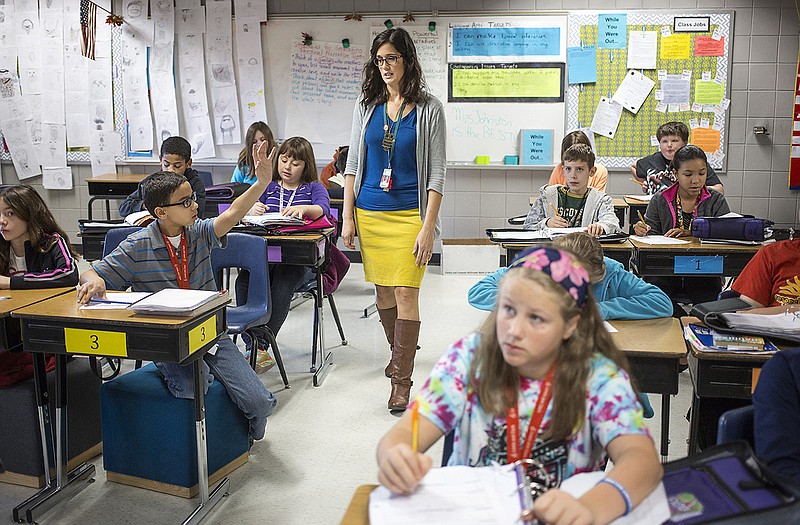Veteran kindergarten teacher Tessa Scheperle has always run a structured, procedure-oriented classroom - or at least she thought so.
Scheperle participated in a Jefferson City Public Schools professional development training over the summer tailored to classroom management, which detailed specific procedures as minute as sharpening a pencil to having a substitute teacher.
It made her realize that while she had classroom procedures for students, they weren't all specific and she didn't always stick to them herself.
Having a procedure for everything down to how coats and backpacks should be hung cuts down on the chaos and gives students a clear expectation for how the classroom is run, she said.
"It's kindergarten. We're the start," said Scheperle, who teaches at West Elementary School. "I will have kids come in to me reading and kids who've never held a pencil. Many don't know how to sit in a group and read. Kindergarten has to be laid out from the beginning. If your procedures are clearly explained, you'll have more productive learning practices."
The professional development days were centered around "The Classroom Management Book" by Harry and Rosemary Wong, detailing how teachers can develop procedures for every minute of every day, said Deanne Fischer, principal of Jefferson City Academic Center and one of the leading faculty members for the training.
"It seems like a lot of procedures, but it takes away a lot of instructional time explaining how to do things every time. It really helps for when there's a sub in the classroom. Kids really don't like surprises; they like consistency. It's really good to have that structure," Fischer said.
During the training, teachers read chapters of the book and had an online discussion. At the end, they created slideshows for their classroom procedures.
Several teachers added small procedures like how students should stack their chairs at the end of the day, how to write their paper heading or to raise their hand to make the class time efficient.
Mary Johnston, a sixth-grade teacher at Lewis and Clark Middle School, said she has had procedures in her classroom in years past, but having specific instruction on how to do things has cut down on classroom disruptions and helped students transition from elementary to middle school.
Sixth-graders are coming to the middle school for the first time, and they're already feeling stressed about finding their classes, opening their lockers and mingling with students they don't know, she said.
Lewis and Clark gets students from about five elementary schools. The students come from different backgrounds and are used to different building procedures, she said.
She went over her slideshow of procedures on the first day of class and spent about two weeks reteaching some practices so they were ingrained in students' daily classroom activity.
"Some students don't know what's expected of them," Johnston said. "Filling in those gaps really helps. From the very beginning, comfort was greater because they know what the classroom is going to look like, and we could start learning faster."
Johnston created a procedure for how students could share stories with her.
She said a lot of students would swarm her desk at the beginning of class to tell her about their weekend. Now she has a "What's Up" board next to her desk where students can write her a message on a note card and pin it to the wall.
Some of the stories are really personal, she said. It has created a safe space for students to open up to her privately and a way for her to respond without cutting into class time.
Johnston shared her procedures with the other teachers in her team so they all have the same structure.
Fischer implemented building-wide procedures for her teachers and students.
Many have said that since they've added more structure, there are fewer behavioral issues.
The suspended student class, which is an alternative to out-of-school-suspension, is housed at JCAS. Fischer said there were a lot of discipline issues with students in the class. Since specific procedures were created, there have been fewer behavioral incidences.
Scheperle noticed the same thing in her kindergarten class. Last year was a difficult year for discipline problems, and this year she has had fewer classroom disruptions.
"Things run so smoothly I almost can't believe it myself," she said.

